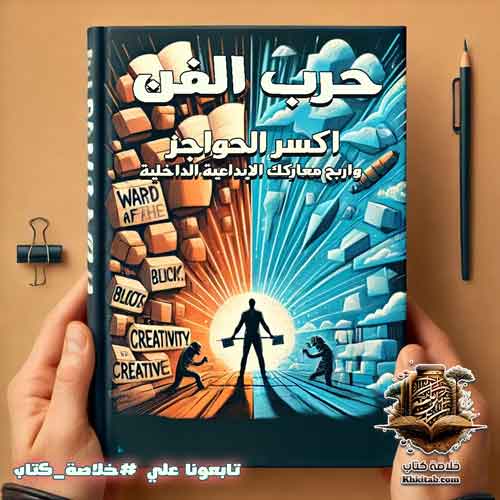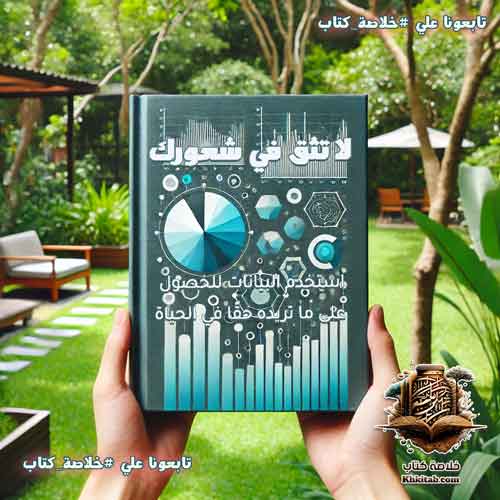
In a world where the pace of life is accelerating and responsibilities and challenges are ever-increasing, Arnold Bennett’s “How to Live on 24 Hours a Day” emerges as a guiding beacon for optimal time utilization. This book tackles the concept of time not as a limited resource that runs out, but as an opportunity that can be invested in a way that adds value to our lives.
Bennett starts his book with a deep analysis of how the average person deals with time, pointing out that many waste precious hours in activities that do not contribute to personal satisfaction or growth. The book highlights the importance of using leisure time in a manner that serves personal and intellectual growth, emphasizing that self-improvement should be a continuous goal, not just an occasional activity.
Bennett stresses the need for mental development and critical thinking, suggesting dedicating time to reading and contemplation in subjects that enrich understanding and broaden horizons. He also encourages readers to live in the present and make the most of it, instead of dwelling in the past’s regrets or the future’s worries.
إقرأ أيضا:Great Leaders Have No Rules: Rethinking Innovative Leadership PrinciplesAdditionally, the book discusses the importance of establishing a daily routine and developing habits that help maximize time utilization. Bennett asserts that this approach does not restrict freedom but rather increases a person’s effectiveness and control over their life.
“How to Live on 24 Hours a Day” is more than just a book on time management; it is an invitation to rethink how we live our lives. Bennett offers practical and philosophical advice that helps readers appreciate the value of every moment and invest it in ways that enrich both the spirit and the mind. In an era where the boundaries between work and personal life are increasingly blurred, this book serves as a reminder of the importance of achieving balance and living with awareness and appreciation of time.
How Does ‘How to Live on 24 Hours a Day’ Change Our Perception of Time?
In his groundbreaking work “How to Live on 24 Hours a Day: The Complete Original Edition,” Arnold Bennett delves into a transformative approach to understanding and utilizing time. A significant portion of the book is dedicated to reshaping the reader’s perception of time. Bennett challenges the common belief that time is a scarce resource, a perspective that often leads to feelings of being overwhelmed and unproductive. He emphasizes that every individual is allotted the same amount of time – precisely 24 hours in a day – and it’s our perception and use of this time that truly matters.
Bennett argues that the notion of time scarcity is a mindset issue rather than a factual reality. He points out that people often lament a lack of time, yet regularly fail to make the most of the time they have. According to Bennett, this contradiction arises not from the actual hours available but from how we choose to perceive and use those hours.
He encourages readers to view each day as a full reservoir of time, waiting to be utilized efficiently and effectively. This perspective shift is not just about managing time better; it’s about redefining our relationship with time. Bennett urges us to stop seeing time as an enemy to be battled or a resource that slips through our fingers, but rather as a valuable asset that we have complete control over.
In addressing this perception, Bennett does not simply offer a platitude but provides practical advice on how to achieve this mindset shift. He suggests starting with small, manageable changes in daily routines and gradually building up to larger adjustments. This incremental approach helps readers to slowly but surely rewire their perception of time, leading to a more fulfilling and productive use of the 24 hours available each day.
Through “How to Live on 24 Hours a Day,” Bennett succeeds in guiding the reader to a profound realization: that the key to effective time management and a more satisfying life lies not in chasing after more hours, but in changing our perception and utilization of the hours we already have. This idea forms the cornerstone of his philosophy on time, setting the stage for the various strategies and insights he shares throughout the book.
Our Facebook Page -Book Summary
How Does ‘How to Live on 24 Hours a Day’ Advocate for Better Utilization of Leisure Time?
Arnold Bennett’s seminal work, “How to Live on 24 Hours a Day: The Complete Original Edition,” profoundly addresses the concept of leisure time utilization. In a world where hours seem to slip away unnoticed, Bennett brings a refreshing perspective on how we can harness our free time for personal development and growth. He delves into the typical misuse of leisure time, critiquing the common tendency to squander these valuable moments on unfulfilling activities.
Bennett observes that most people, despite complaining about a lack of time, often spend their free hours in passive entertainment or idle rest, without much thought to self-improvement. He points out that while rest is essential, it should not consume all our free hours. Instead, Bennett proposes that leisure time is a golden opportunity for self-education and personal development.
He suggests that individuals should use this time to engage in activities that nourish the mind and spirit. This can include reading, learning new skills, or pursuing hobbies that challenge and stimulate the intellect. Bennett emphasizes that such activities should not be seen as chores or additional work but as enjoyable and fulfilling pursuits that contribute to our overall sense of well-being and personal growth.
Furthermore, Bennett encourages readers to set aside specific times for these activities, creating a routine that integrates personal development into daily life. He argues that by doing so, we not only make better use of our leisure time but also enhance our daily working lives. The skills and knowledge gained during leisure hours can translate into improved performance and a more balanced, satisfying life.
In essence, “How to Live on 24 Hours a Day” urges us to rethink our approach to leisure time. Bennett’s guidance moves us away from the passive consumption of time towards an active, purposeful engagement with our free hours. By doing so, he assures us that we can lead richer, more fulfilling lives, making every hour count, not just in terms of productivity but in terms of personal enrichment and joy.
Self-development – Book Summary Library (khkitab.com)
How Does ‘How to Live on 24 Hours a Day’ Emphasize Mental Exercise for Personal Growth?
In “How to Live on 24 Hours a Day: The Complete Original Edition,” Arnold Bennett presents a compelling argument for the importance of mental exercise in our daily lives. The book, far from being just a time management guide, delves into the realm of personal development, with a particular focus on the cultivation of the mind. Bennett’s insights on mental exercise form a core part of his philosophy on making the most out of every hour of the day.
Bennett emphasizes that just as physical exercise is essential for maintaining the health of the body, mental exercise is crucial for the wellbeing and growth of the mind. He advocates for regular engagement in activities that challenge and stimulate the intellect. This includes reading literature, exploring new subjects, and indulging in thoughtful contemplation.
The author argues that the modern lifestyle, often filled with mundane tasks and distractions, can lead to a stagnation of mental faculties. To counter this, Bennett suggests setting aside dedicated time each day for mental activities. This could be as simple as reading a challenging book, learning a new language, or practicing a skill. The key, according to Bennett, is to engage in these activities consistently and with intention.
Moreover, Bennett encourages the reader to view these mental exercises not as a chore but as an opportunity for personal enrichment. He believes that such practices not only enhance cognitive abilities but also contribute to overall life satisfaction. By dedicating time to mental cultivation, individuals can experience a greater sense of fulfillment and accomplishment.
In “How to Live on 24 Hours a Day,” Bennett’s guidance on mental exercise is presented as an integral part of living a balanced and enriched life. He does not simply suggest mental activities; he provides a framework for integrating them into our daily routines, ensuring that each day is not just productive but also mentally stimulating and rewarding. This focus on mental exercise is a key element in Bennett’s overall message: that the mindful use of our daily hours can lead to a more fulfilling and meaningful life.
How Does ‘How to Live on 24 Hours a Day’ Encourage Living in the Present Moment?
Arnold Bennett’s influential book “How to Live on 24 Hours a Day: The Complete Original Edition” addresses a crucial aspect of life often overlooked: the importance of living in the present. Bennett’s exploration of this topic is not just an aside; it forms a fundamental part of his overall message about making the most of every hour.
Bennett starts by acknowledging a common human tendency to either dwell on the past or worry about the future, often at the expense of the present moment. He notes that many of us are physically present but mentally elsewhere, either ruminating over past events or anxious about future possibilities. Bennett argues that this disconnection from the present is not just a lost opportunity for enjoyment and fulfillment but also a significant barrier to effective living and personal growth.
He advocates for a conscious effort to be fully engaged in the present moment. According to Bennett, appreciating the present involves more than just a passive acknowledgment of the ‘now’; it requires an active engagement with our current experiences, thoughts, and feelings. He suggests that being mindful of the present allows individuals to savor life’s experiences more fully and develop a deeper understanding of themselves and their surroundings.
Bennett also discusses practical ways to cultivate this mindset. He proposes simple yet effective strategies, such as mindfulness practices, focused breathing, and deliberate attentiveness to everyday tasks. These practices help anchor individuals in the present, making them more aware of their current experiences and reducing the mental clutter of past regrets or future worries.
Furthermore, Bennett emphasizes that living in the present is not about ignoring the past or future but about finding a balance. He believes that by grounding ourselves in the present, we can draw lessons from the past and plan for the future more effectively, without being overwhelmed by them.
In “How to Live on 24 Hours a Day,” Bennett presents living in the present as an essential component of a fulfilling life. He encourages readers to embrace the present moment, not as an escape from reality, but as a way to experience life more fully and meaningfully. This focus on the present is a key element in Bennett’s broader philosophy of time management and personal development, offering a path to a more engaged, productive, and satisfying life.
How Does ‘How to Live on 24 Hours a Day’ Advocate for Routine and Habit Formation for Efficient Time Use?
Arnold Bennett’s “How to Live on 24 Hours a Day: The Complete Original Edition” offers a timeless perspective on the role of routine and habit formation in maximizing the efficiency of our daily time use. Bennett’s insights go beyond simple time management techniques; they delve into the psychology of habits and how they can transform our lives.
Bennett asserts that the establishment of a daily routine is crucial for taking control of our time. He argues that without a structured plan, our time can easily slip away, consumed by trivial activities and unproductive habits. Bennett’s approach is not about filling every moment with activity, but rather about creating a framework within which we can operate more efficiently.
The author emphasizes the power of habits in shaping our daily lives. He suggests that by consciously forming positive habits, we can automate beneficial behaviors, reducing the mental effort needed to make daily decisions. This automation, according to Bennett, frees up mental space, allowing us to focus on more important and fulfilling tasks.
Bennett also addresses the challenge of habit formation, acknowledging that changing or establishing habits can be difficult. He advises starting small, focusing on one or two habits at a time, and gradually building upon them. Consistency, he notes, is key. By sticking to a routine, even when it’s challenging, we reinforce the habit and integrate it into our daily life.
Moreover, Bennett encourages readers to be mindful and intentional about their routines. He suggests regularly reviewing and adjusting routines to ensure they align with our goals and values. This dynamic approach to routine and habit formation ensures that our daily activities remain relevant and supportive of our long-term aspirations.
In “How to Live on 24 Hours a Day,” Bennett’s advice on routine and habit formation is presented as a crucial element for making efficient use of our time. He doesn’t just advocate for being busy; he champions the idea of being purposefully productive. Bennett’s focus on routines and habits serves as a foundation for his broader message: that careful, intentional use of our time can lead to a more structured, rewarding, and fulfilling life.
How Does ‘How to Live on 24 Hours a Day’ Encourage Personal Development in Free Time?
Arnold Bennett’s “How to Live on 24 Hours a Day: The Complete Original Edition” places significant emphasis on the value of personal development, particularly during one’s free time. Bennett’s approach to personal development is holistic, encompassing intellectual growth and self-improvement as integral parts of making the most out of every day.
Bennett challenges the reader to rethink their free time, often squandered on unfulfilling activities or passive entertainment. He argues that this time, if used wisely, can become a powerful resource for personal development. Bennett suggests that individuals should dedicate their leisure time to activities that foster intellectual growth and self-improvement, such as reading thought-provoking books, learning new skills, or engaging in creative pursuits.
The author emphasizes the importance of seeing personal development not as a luxury but as a necessity. He points out that the growth of the mind and spirit is just as important as professional achievements. Bennett encourages the reader to set aside time for activities that enrich the mind, arguing that these pursuits are essential for a balanced and fulfilling life.
Moreover, Bennett offers practical advice on how to incorporate personal development into daily life. He advocates for establishing a routine that includes dedicated time for self-improvement activities. Bennett also suggests setting specific goals for personal development, such as finishing a particular book or mastering a new skill, to provide direction and motivation.
In “How to Live on 24 Hours a Day,” Bennett’s perspective on personal development is revolutionary, especially considering the era in which it was written. He dispels the notion that self-improvement is an optional or secondary aspect of life, positioning it instead as a vital component of daily living. This focus on personal development during free time is a core theme in the book, reflecting Bennett’s belief that the intentional use of leisure time for growth and learning is key to living a well-rounded and satisfying life.
How Does ‘How to Live on 24 Hours a Day’ Guide in Balancing Work and Personal Life?
In “How to Live on 24 Hours a Day: The Complete Original Edition,” Arnold Bennett offers invaluable insights into achieving a balance between professional responsibilities and personal interests, a topic of perennial importance in our increasingly busy lives. Bennett’s approach to this balance is not about compromising one aspect for the other, but rather finding harmony between the two.
Bennett acknowledges the challenge that most individuals face: the feeling of being overwhelmed by work responsibilities while personal interests and hobbies take a backseat. He argues that this imbalance not only leads to a less fulfilling life but can also affect one’s efficiency and effectiveness at work. Bennett stresses the importance of not allowing work to consume one’s entire day, advocating for dedicated time to personal pursuits and relaxation.
A key theme in Bennett’s book is the effective use of time. He believes that many people fail to realize the potential of the hours outside of work. Bennett encourages his readers to consciously allocate time for personal development, relaxation, and hobbies. This allocation isn’t about rigidly segmenting one’s day but about recognizing and making the most of the time available.
Bennett also addresses the mindset needed to achieve this balance. He suggests that individuals should not view their personal time as a mere break from work, but as an opportunity to engage in activities that enrich their lives and contribute to their overall well-being. This can include reading, pursuing a hobby, spending quality time with family, or simply relaxing and reflecting.
Furthermore, Bennett advises on the importance of discipline and self-management. He promotes the idea of planning and structuring one’s day in a way that accommodates both work and personal activities. This planning should not be seen as a restriction, but as a means to ensure that both aspects of life receive the attention they deserve.
In “How to Live on 24 Hours a Day,” Bennett’s guidance on balancing work and personal life is presented as an essential aspect of living a fulfilled and contented life. He doesn’t just advocate for more efficient work habits; he champions a holistic approach to life where personal development and enjoyment are given equal importance. This balance, according to Bennett, is key to not only being more productive but also leading a more satisfying and well-rounded life.
What Techniques Does ‘How to Live on 24 Hours a Day’ Suggest for Effective Time Management and Prioritization?
Arnold Bennett’s “How to Live on 24 Hours a Day: The Complete Original Edition” is a treasure trove of techniques for effective time management and prioritization. In this book, Bennett doesn’t just emphasize the importance of time; he provides practical methods to maximize its use. His approach to time management is less about squeezing more activities into the day and more about prioritizing tasks to ensure the most important ones get the attention they deserve.
One of the core techniques Bennett advocates is the deliberate evaluation of tasks based on their significance. He suggests categorizing tasks into levels of importance and urgency, allowing for a clearer understanding of what needs immediate attention and what can be scheduled for later. This method aligns with the well-known Eisenhower Matrix, which classifies tasks into four quadrants based on urgency and importance.
Bennett also emphasizes the need for regular planning and review. He recommends setting aside time at the beginning of each week or day to plan out tasks, setting clear goals and objectives. This planning process includes identifying the most critical tasks and allotting sufficient time to them. Bennett advises against overloading the schedule, suggesting instead to leave room for flexibility and unexpected events.
Another key aspect of Bennett’s time management philosophy is the minimization of distractions. In an era where distractions are omnipresent, Bennett’s advice is particularly relevant. He advocates for creating an environment conducive to focus and concentration, whether it’s finding a quiet workspace or minimizing digital interruptions.
Moreover, Bennett highlights the importance of taking breaks and allowing time for rest. He understands that effective time management isn’t just about work; it’s about maintaining a healthy balance. Rest and leisure are not just rewards but necessary elements that rejuvenate the mind and body, making them more productive in the long run.
In “How to Live on 24 Hours a Day,” Bennett offers a guide to time management that is both practical and sustainable. His techniques are not about relentless efficiency; instead, they are about thoughtful prioritization and the wise use of time. Bennett’s approach encourages readers to view time as a valuable resource and shows that with the right strategies, it is possible to achieve a productive and balanced life.
How Does ‘How to Live on 24 Hours a Day’ Promote Reflection and Self-Awareness for Aligning Time with Personal Values?
Arnold Bennett’s “How to Live on 24 Hours a Day: The Complete Original Edition” is a profound guide that not only addresses time management but also delves into the deeper aspects of reflection and self-awareness. Bennett’s work transcends the typical focus on efficiency, emphasizing the importance of aligning our time with our personal values and goals.
Bennett advocates for the cultivation of self-awareness as a crucial step in effectively managing one’s time. He believes that without understanding what truly matters to us, our efforts to manage time can become aimless and unfulfilling. Bennett suggests that regular self-reflection is key to gaining this understanding. He encourages readers to take time to ponder their personal values, aspirations, and the kind of life they want to lead.
A central theme in Bennett’s book is the idea that time should be spent in ways that reflect our deepest values and aspirations. He urges readers to examine their daily routines and activities critically, questioning whether they are in harmony with their personal goals. This introspection, according to Bennett, helps in making more informed choices about how to allocate time.
Bennett also discusses the role of mindfulness in achieving self-awareness. He recommends practices such as meditation or simply spending quiet time in contemplation as methods to foster a deeper connection with oneself. These practices, he asserts, can lead to greater clarity about what is genuinely important, thereby aiding in prioritizing tasks and commitments.
Furthermore, Bennett emphasizes the need for honest self-assessment. He encourages readers to regularly evaluate their progress towards their goals and to adjust their strategies accordingly. This ongoing process of reflection ensures that time is not just spent efficiently, but also effectively, in ways that enrich one’s life and contribute to personal growth.
In “How to Live on 24 Hours a Day,” Bennett presents reflection and self-awareness as essential tools for aligning time with personal values. He moves beyond the surface-level techniques of time management, offering a more nuanced and meaningful approach to how we spend our hours. Bennett’s perspective encourages readers to see time as a precious resource that, when used in alignment with our deepest values, can lead to a more fulfilling and purposeful life.
How Does ‘How to Live on 24 Hours a Day’ Help Overcome the ‘No Time’ Excuse and Focus on What Truly Matters?
In “How to Live on 24 Hours a Day: The Complete Original Edition,” Arnold Bennett tackles the all-too-common excuse of ‘not having enough time’ and provides insightful strategies to overcome this mindset. Bennett’s approach is not just about managing time better; it’s about fundamentally changing our perception of time and its value.
Bennett begins by debunking the myth that we don’t have enough time. He points out that each person has the same 24 hours in a day, and it’s how we choose to use these hours that makes the difference. He challenges the reader to confront their own misconceptions about time, urging them to recognize that claiming ‘no time’ is often an easy way out of committing to more meaningful activities.
One of the key themes in Bennett’s book is the importance of prioritizing tasks that align with our personal values and goals. He stresses that many people spend their time on unimportant tasks or idle leisure, while neglecting activities that truly enrich their lives. Bennett encourages readers to scrutinize their daily routines and identify areas where time is being wasted or misused.
Bennett also offers practical advice on reallocating time to more important endeavors. He suggests auditing one’s typical day and identifying pockets of time that could be better used. This might involve waking up earlier, reducing time spent on trivial activities, or simply being more mindful about how time is spent throughout the day.
Moreover, Bennett emphasizes the importance of commitment and discipline in making time for what truly matters. He argues that making significant changes in how we use our time requires a conscious decision and sustained effort. This involves setting clear goals, creating plans to achieve them, and sticking to these plans despite distractions or challenges.
In “How to Live on 24 Hours a Day,” Bennett’s message is clear: the excuse of ‘no time’ is a self-imposed limitation. He encourages readers to break free from this mindset and take control of their time. By doing so, Bennett assures that we can not only accomplish more but also lead more fulfilling lives, aligned with our true priorities and aspirations. This perspective is not just about time management; it’s about life management, using our time as a tool to create a life that reflects our deepest values and purposes.







